Two ways to make fluffy Buttermilk Biscuits using 7 simple ingredients.
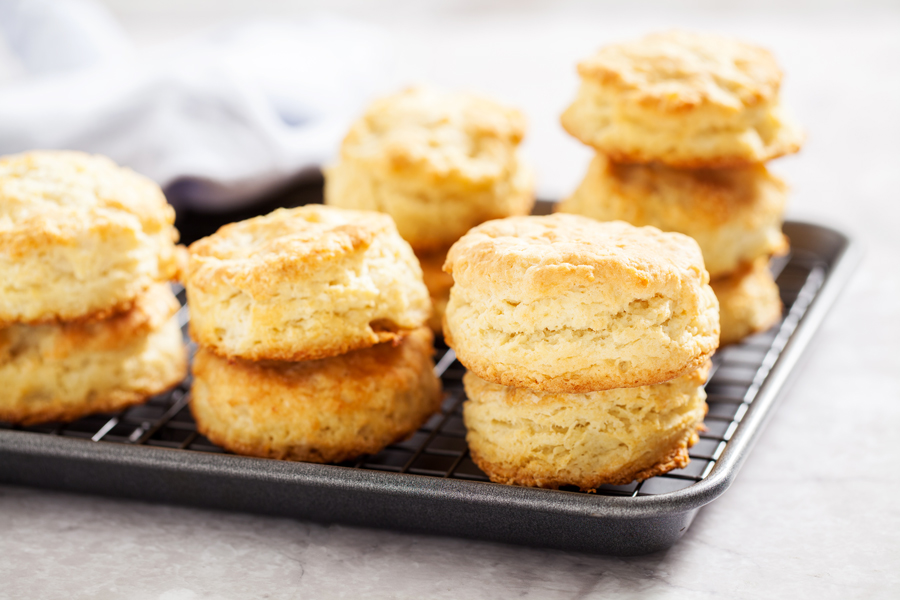 Who doesn’t love fluffy Buttermilk Biscuits? While warm, I love to halve Buttermilk Biscuits and savor the steamy aroma in the center. Pure heaven!
Who doesn’t love fluffy Buttermilk Biscuits? While warm, I love to halve Buttermilk Biscuits and savor the steamy aroma in the center. Pure heaven!
I have cupcakes, scones, sweet and savory muffins, and breads on The PKP Way, but no Buttermilk Biscuits. So, let me change that right now. I turned my kitchen upside down trying to find the perfect combination of ingredients and the proper technique to create the perfect biscuits. You know, the ones that are dry (cracker-like) on the outside and fluffy on the inside. It took five or six tries, but I’m so happy to be able to share my favorite combination with you today.
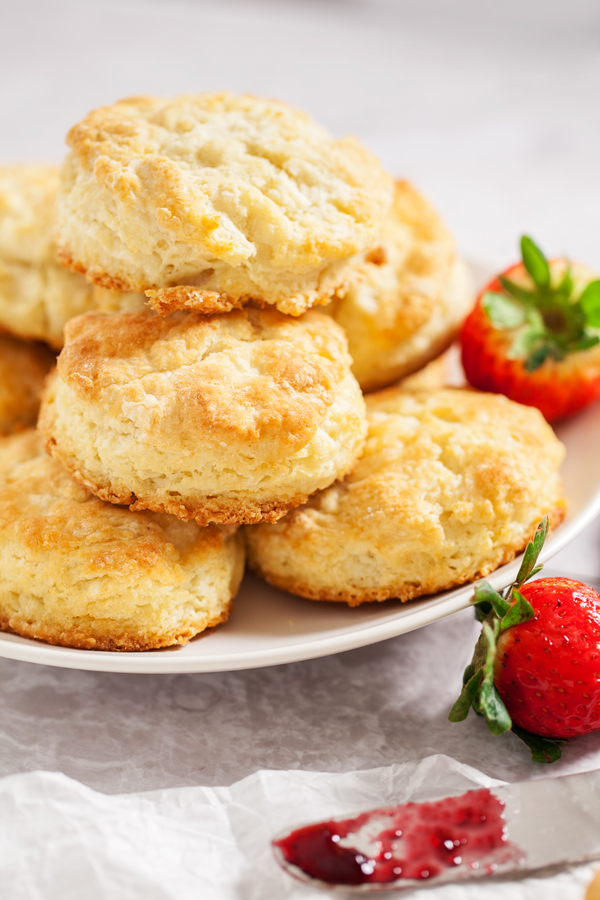 Before exploring the Buttermilk Biscuits world, I never knew how similar they are to scones and pie crusts. The similar part being that their fluffiness is dependent on keeping the butter cold while it’s in the dough and maintaining that chill up until baking. Once I found the proper combination of ingredients, I tested two different methods of making the dough. The first used a large bowl and mixing by hand and the second was using a hands-off approach, using the food processor.
Before exploring the Buttermilk Biscuits world, I never knew how similar they are to scones and pie crusts. The similar part being that their fluffiness is dependent on keeping the butter cold while it’s in the dough and maintaining that chill up until baking. Once I found the proper combination of ingredients, I tested two different methods of making the dough. The first used a large bowl and mixing by hand and the second was using a hands-off approach, using the food processor.
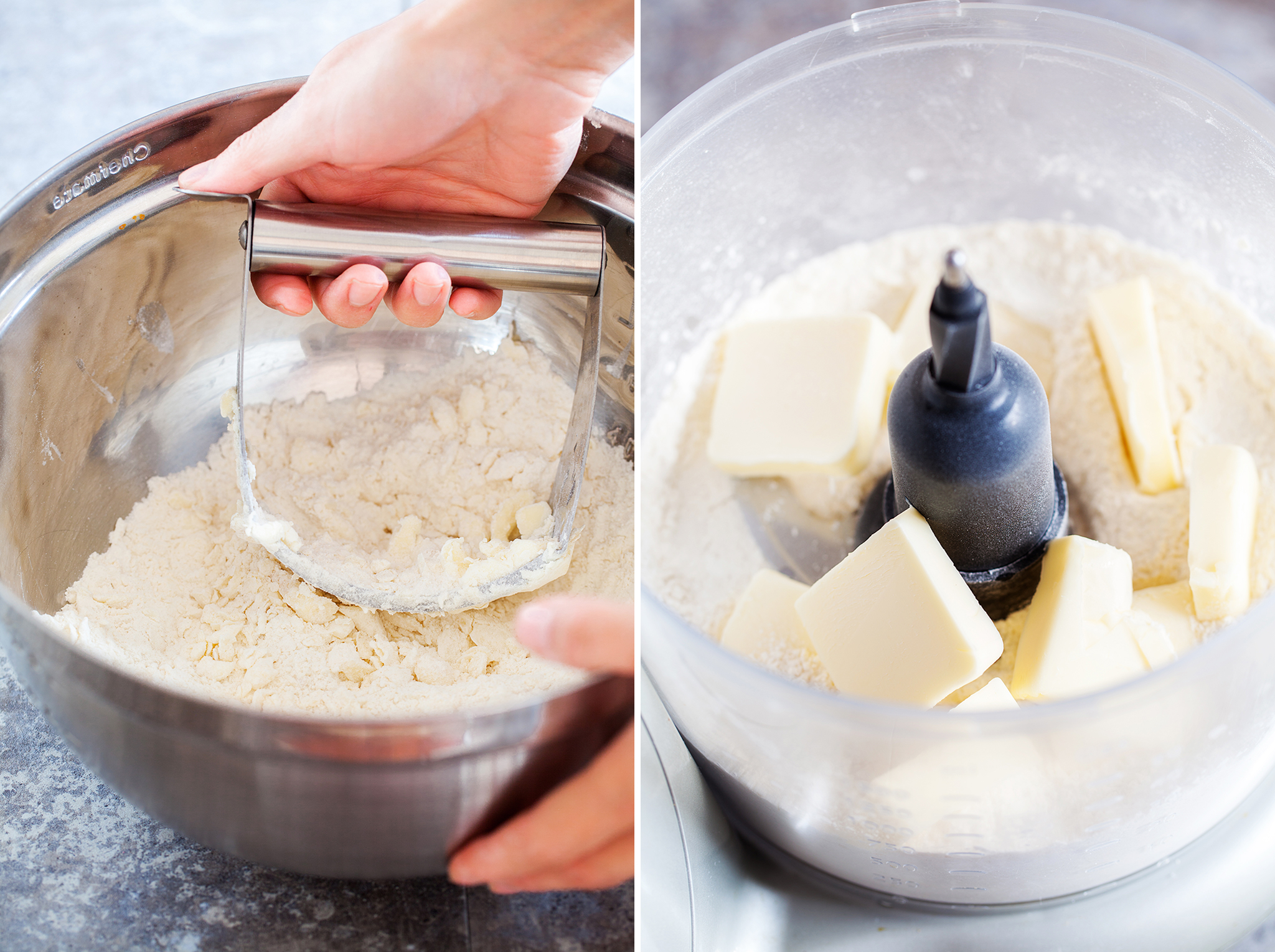 Personally, I prefer the food processor approach because it creates a uniform dough quicker. The quicker the dough is ready, the quicker I can pop it in the oven, and the less time the butter has to melt. But, I’m not sure if it’s a faux pas to make biscuits in a food processor, so I provide both options so you can choose for yourself.
Personally, I prefer the food processor approach because it creates a uniform dough quicker. The quicker the dough is ready, the quicker I can pop it in the oven, and the less time the butter has to melt. But, I’m not sure if it’s a faux pas to make biscuits in a food processor, so I provide both options so you can choose for yourself.
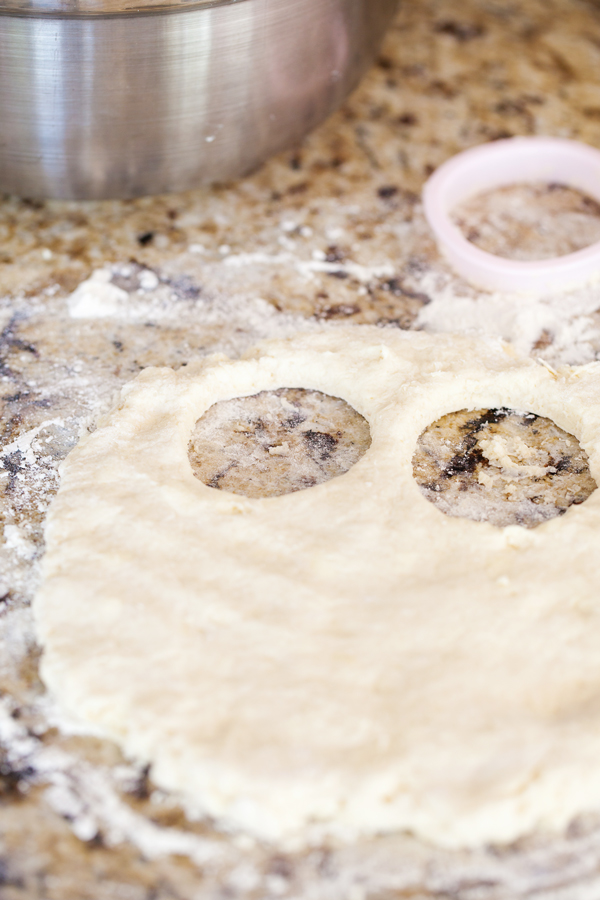 Once you’ve mastered these Buttermilk Biscuits, you will have opened the door to a variety of dishes just waiting to be explored – biscuit sandwich, biscuits and gravy, fried chicken and biscuits! What will you make first?
Once you’ve mastered these Buttermilk Biscuits, you will have opened the door to a variety of dishes just waiting to be explored – biscuit sandwich, biscuits and gravy, fried chicken and biscuits! What will you make first?
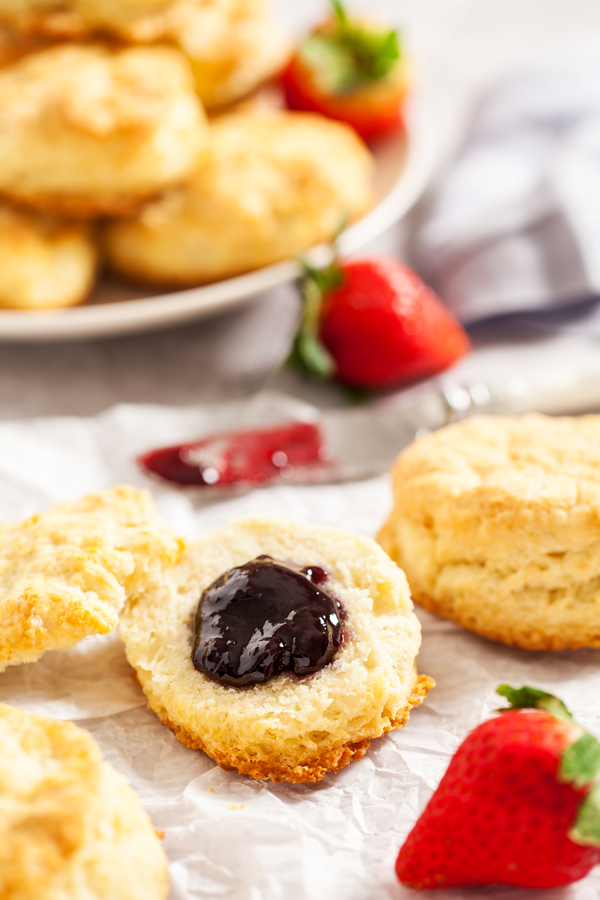
Buttermilk Biscuits
Ingredients
- 1 1/2 cup all-purpose flour
- 1 1/2 tablespoon granulated sugar
- 3/4 teaspoon salt
- 1 tablespoon baking powder
- 1 teaspoon baking soda
- 8 tablespoons unsalted butter, chilled, cut into 8 pats
- 3/4 cup buttermilk, cold
Instructions
Made in a Bowl by Hand
- Preheat oven to 400°F and line a baking sheet with parchment paper or silicone mat.
- In a large bowl, whisk together the flour, sugar, salt, baking powder, and baking soda. Add the pats of butter and use a pastry blender or fork to work the butter into the flour until coarse dough pieces form.
- Pour in the buttermilk and fold together with a bowl scraper or wooden spoon until mostly combined. Turn the dough onto a generously floured surface and bring any crumbs together to form a cohesive dough.
- With floured hands and working quickly (so not to warm the dough), pat the dough until 1/2-inch thick. Using a round 2-inch biscuit cutter, press the cutter straight down into the dough and transfer the round to the prepared sheet, spacing 1-inch apart. Repeat with the rest of the dough. Combine the leftover scraps and repeat until all the dough is used up.
- Bake for 5 minutes. Then, reduce the oven to 350°F, rotate the pan, and bake for an additional 10 minutes, until the tops are golden brown. Let cool on the baking sheet for 10 minutes. Serve warm.
Made in a Food Processor
- Preheat oven to 400°F and line a baking sheet with parchment paper or silicone mat.
- In the bowl of a food processor, add the flour, sugar, salt, baking powder, baking soda, and butter. Pulse quickly, about 10 times, just to break up the butter into pea-sized pieces.
- In the pour spout, add the buttermilk while continuing to pulse. Pulse until the dough is just combined and uniform.
- Turn the dough onto a generously floured surface, using a spatula to scrape off any dough on the blade.
- With floured hands and working quickly (so not to warm the dough), pat the dough until 1/2-inch thick. Using a round 2-inch biscuit cutter, press the cutter straight down into the dough and transfer the round to the prepared sheet, spacing 1-inch apart. Repeat with the rest of the dough. Combine the leftover scraps and repeat until all the dough is used up.
- Bake for 5 minutes. Then, reduce the oven to 350°F, rotate the pan, and bake for an additional 10 minutes, until the tops are golden brown. Let cool on the baking sheet for 10 minutes. Serve warm.
Notes
Note: This page contains affiliate links that help make The PKP Way possible. Should you choose to purchase anything via those links, I will receive a small commission paid by Amazon, not you.





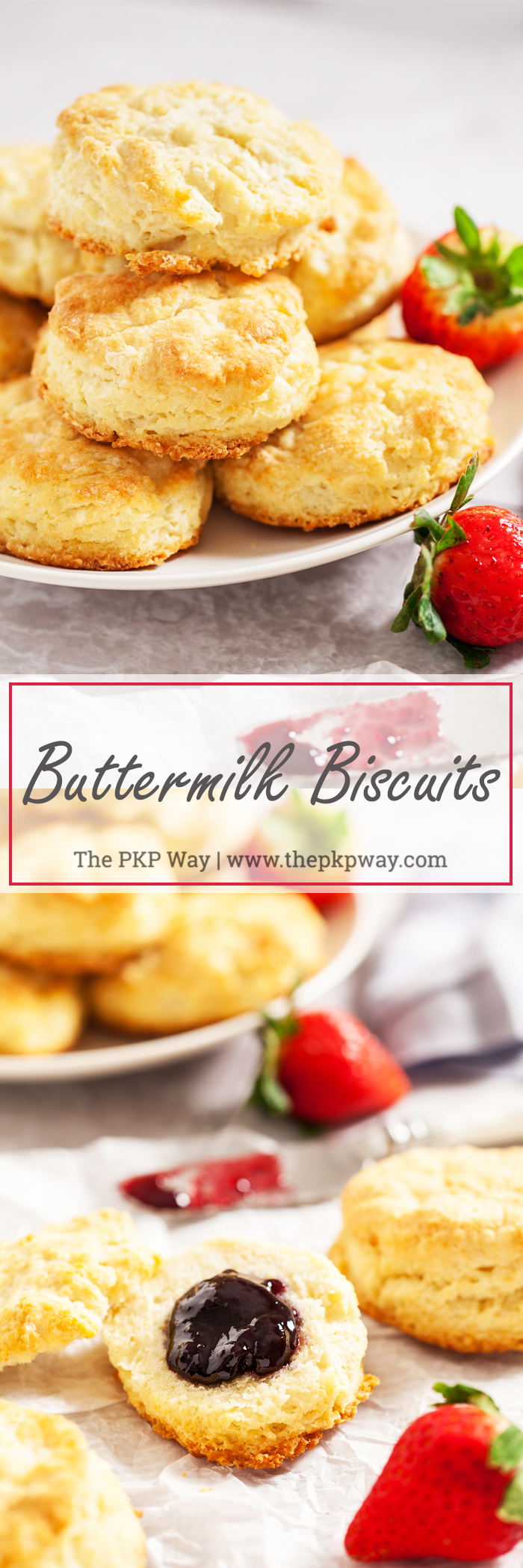
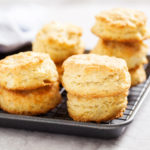
Hi Patty! We love a biscuit that’s crusty (like pastry) but tender on the inside (perfection)! I’m eager to try your recipe, and especially intrigued by the bottom of the biscuits that look a little darker and very crusty. But your recipe didn’t mention a cast iron skillet or any alternative to a baking sheet. I have a friend who dips his biscuits in melted butter before baking in a cast iron skillet or unglazed pottery dish. What can you tell me about how you achieved that? TIA!
Hi there! I haven’t heard of that technique, but it sounds intriguing. I’ll have to research a little more and do some testing before I can offer any advice. Hope you try my baking sheet method. Thanks for stopping by!